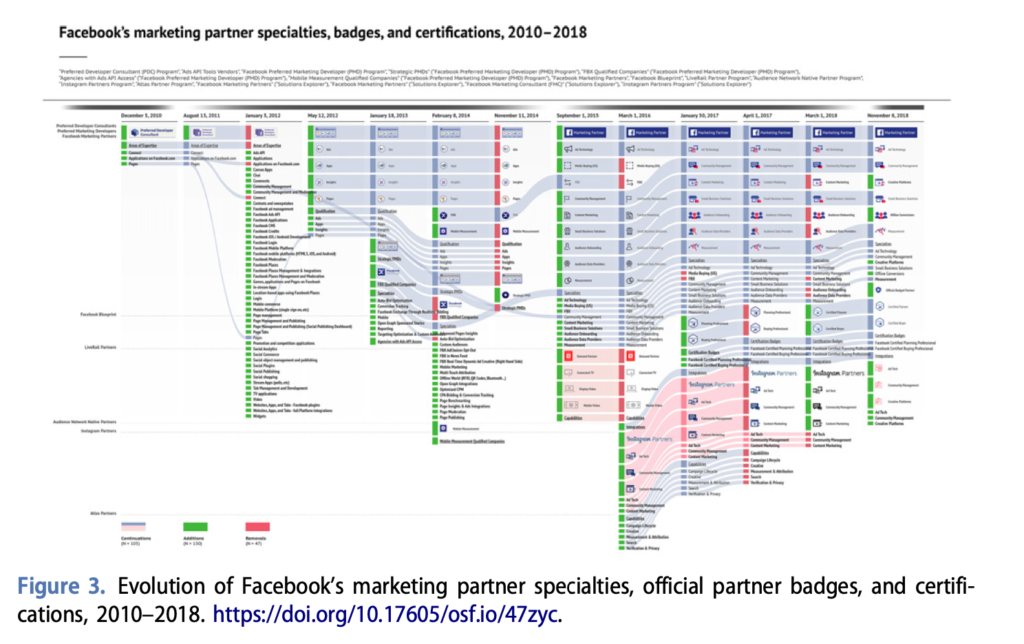Anne Helmond, David B. Nieborg and Fernando N. van der Vlist, “Facebook’s evolution: development of a platform-as-infrastructure”, Internet Histories, 2019, 3:2, pp. 123-146, DOI: 10.1080/24701475.2019.1593667

Abstract: The purpose of this article is to operationalise an evolutionary perspective on the history of social media and to trace Facebook’s evolution from a social networking site to a “platform-as-infrastructure”. Social media platforms such as Facebook change constantly on the level of their platform architectures, interfaces, governance frameworks, and control mechanisms, all while responding to their larger environments. By examining the evolution of Facebook’s programmability and corporate partnerships, we develop an empirical historical analysis of the platform’s boundary dynamics that ultimately determine its operational scale and scope. Based on our analysis of a unique set of archived primary sources, we discern four main stages in Facebook’s long-term evolution and discuss the interplay between ongoing processes of “platformisation” and “infrastructuralisation”. We argue that these terms foreground complementary aspects of the platform’s efforts in balancing its expansion and adaptability to changing user needs and other “environmental dynamics” without risking its integrations and embedding in other domains, such as advertising, marketing, and publishing. Ultimately, our contribution illustrates how empirical platform histories can denaturalise the current dominant position of social media platforms, such as Facebook, revealing over a decade of incremental evolution rather than revolution. Full article available
